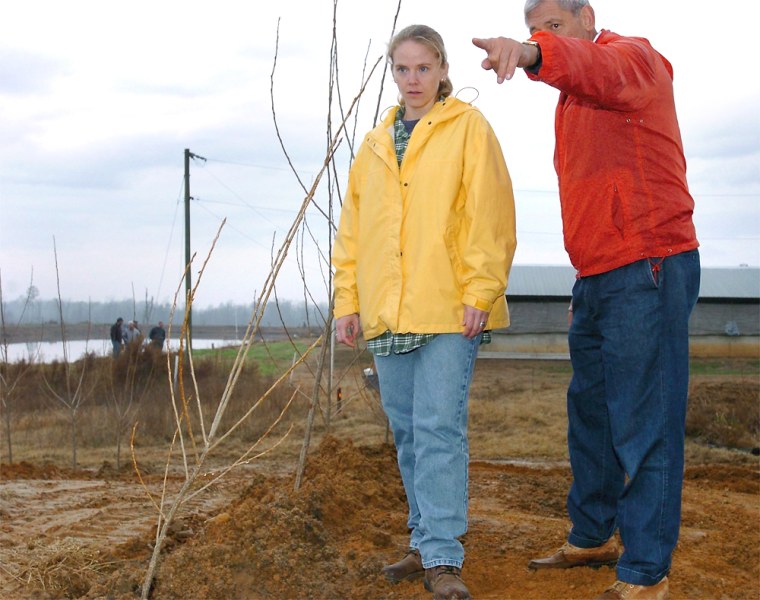After years of struggling with the dirty disposal problem of sludge from hog waste lagoons, researchers have come up with a possible green solution -- poplar trees that suck up the waste like soda straws.
If the procedure works well enough to be approved by state water quality officials, it could more than cut in half the cost of closing a waste lagoon, currently done with bulldozers and dump trunks.
"It is a simple method," said Frank Humenik, coordinator of the animal waste management program at North Carolina State University.
Humenik has been working with Oregon researchers who have been experimenting the past few years with technology that relies on groves of fast-growing hybrid poplars to suck up waste.
'Natural purification'
Studies have found the trees can absorb nearly 3,000 gallons of effluent per acre per day, ridding the ground ammonia and nitrogen by safely metabolizing the compounds in their woody tissue.
Oregon State University water quality researcher Ron Minor said it could take 10 years before the trees clean the land well enough that it can be used again.
"Over time, the trees take up the nutrients and it is natural purification," Humenik said. "With the trees, you have a harvestable product."
The current method approved by the state of North Carolina to clean up hog lagoons is complex. First, the liquid is drained from the top of the lagoon onto existing sprayfields of grass at the farm. Then the farmer pays to have the sludge scooped out and trucked away to be spread thinly on acres of fields.
"We don't like to haul that stuff around," Humenik said.
1,700 lagoons await cleanup
Humenik said the sludge usually isn't welcomed by neighbors of the fields. The cost and politics of cleanup may be the reason only 20 lagoons were closed last year in the state, he said.
There are 1,700 inactive lagoons in North Carolina waiting cleanup and 4,500 more lagoons in use. North Carolina ranks second in hog production at 9.6 million animals, behind Iowa at 15 million head.
National Pork Board figures show one animal produces between 8,000 pounds and 64,000 pounds of waste a year, depending on its development.
Cleaning out a typical lagoon could cost as much as $40,000 an acre, not counting the cost of land on which to spread the sludge. The sludge can't fertilize crops for human consumption. Humenik said the typical lagoon cleanup using the poplars would cost between $15,000 and $20,000 for a lagoon that is two to three acres.
